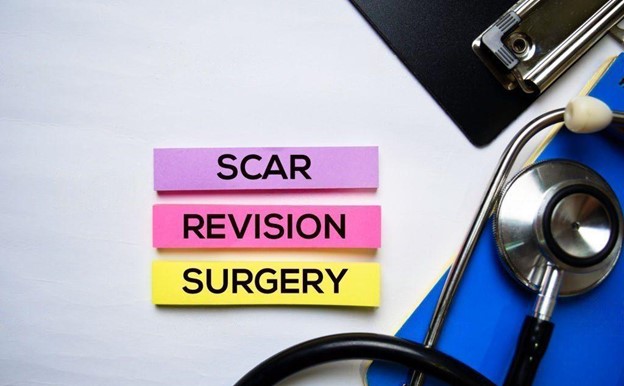
You might not know this, but one in seven people in Singapore has some form of scarring. While some scars are hidden away, others are right there on full display for the world to see.
Whether it’s a result of an accident or surgery, a scar can be quite a blow to your confidence levels. But did you know that there’s a solution?
It’s called a scar revision, and it just might be exactly what you need.
In this blog post, we’re going to give you the lowdown on everything you need to know about scar revisions. From what they are and how they’re performed to what you can expect from the procedure, we’ve got you covered.
So sit back, relax, and let us do all the heavy lifting.
What is Scar Revision?
A scar revision is a surgical procedure that’s performed to improve the appearance of a scar. The surgery aims to make the scar less visible or noticeable.
Scar revision can be done for both cosmetic and functional purposes. For example, if a scar is interfering with your ability to move or function normally, then a scar revision might be recommended.
There are two types of scars—keloids and hypertrophic scars—and each type responds differently to a treatment.
Keloid scars are raised and red scars that extend beyond the original wound site. Hypertrophic scars, on the other hand, are raised but don’t extend beyond the original wound site.
The first step in the process is to consult with a board-certified plastic surgeon. During your consultation, your surgeon will examine your scars and discuss your goals for treatment.
They will also provide you with realistic expectations for the results of surgery. It is important to note that not all scars can be completely removed. However, most scars can be significantly improved with scar revision surgery.
Several different techniques can be used for scar revision surgery. The type of technique used will depend on the specific characteristics of your scar.
Your surgeon will determine which technique is best suited for your individual needs.
How Is It Performed?
A scar revision is usually performed under local anesthesia, which numbs the area around the scar. The type of anesthesia used will depend on factors such as the size and location of the scar.
If the scar is small, then topical anesthesia may be sufficient. Greater scars may require injected anesthesia or even general anesthesia.
Once you’re numb, your surgeon will make small incisions around the scar to release it from the surrounding tissue. This will help relieve any tension in the skin and allow for better healing.
Your surgeon will then carefully trim away any excess tissue and close the incisions with stitches or staples.
The length of time required for the surgery will depend on factors such as the size and location of your scar. Smaller scars may only take 30 minutes to an hour to treat, while larger ones could take several hours.
What Can I Expect Afterward?

Aftercare following scar revision surgery is just as important as the surgery itself. Your surgeon will provide you with specific instructions on how to care for your incisions and what activities you should avoid during the healing process.
After your surgery, your incisions will be covered with dressings or bandages to protect them as they heal.
You might also have drains in place to prevent fluid buildup under your skin. These drains will usually be removed within a few days after surgery.
You can expect some swelling, bruising, and soreness around your incisions, which should start to improve within a week or two following surgery. Most people take 1-2 weeks off from work or their usual activities to recover.
Your doctor will give you specific instructions on how long you need to wait before starting up again. You must follow these instructions carefully so that you don’t risk damaging your incisions.
You should also avoid exposing your incisions to sunlight for at least 6 months, as this can delay healing.
Finally, make sure you keep your follow-up appointments so that your doctor can check on your progress.
Most patients can return to their normal activities within a few weeks after surgery.
Conclusion
If you are unhappy with the appearance of your scars, scar revision surgery may be an option for you. This type of surgery can help improve the appearance of hypertrophic scars and keloids.
During your consultation, your surgeon will examine your scars and discuss your goals for treatment. They will also provide you with realistic expectations for the results of surgery.
It is important to note that not all scars can be completely removed, but most scars can be significantly improved with scar revision surgery.
